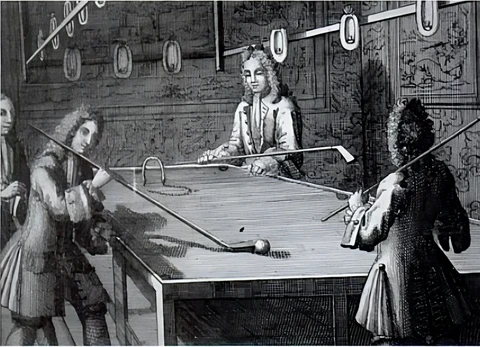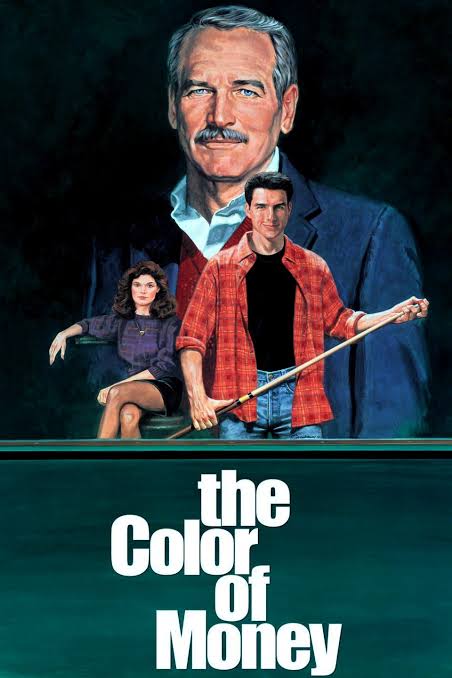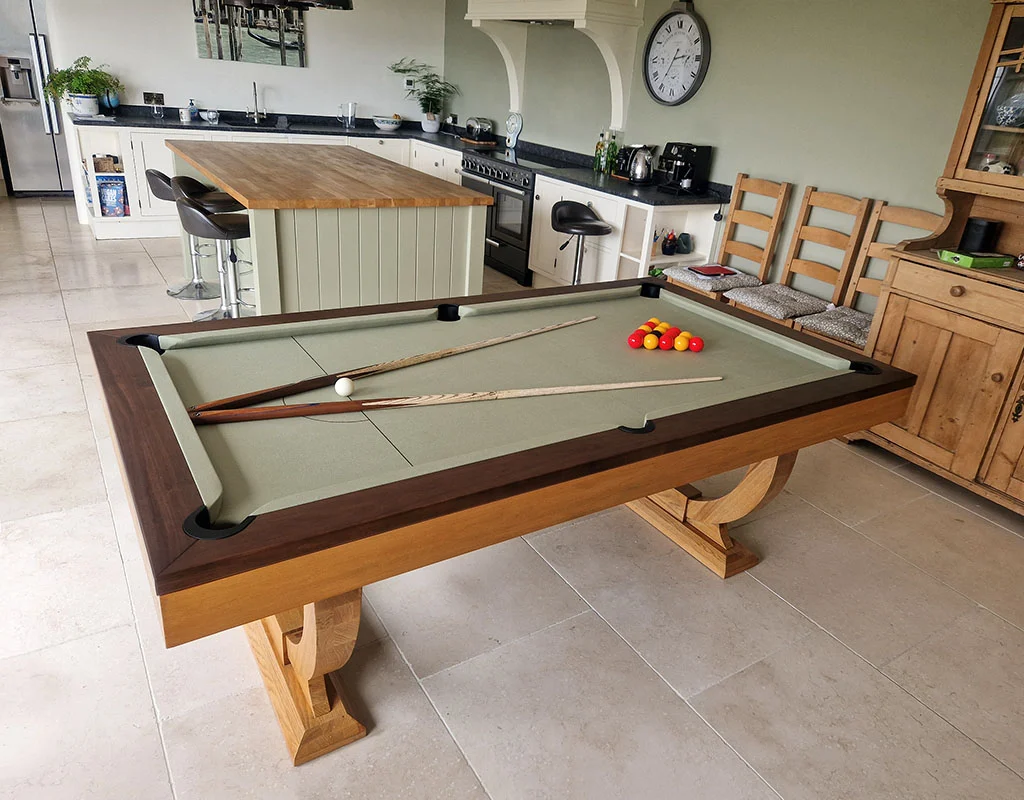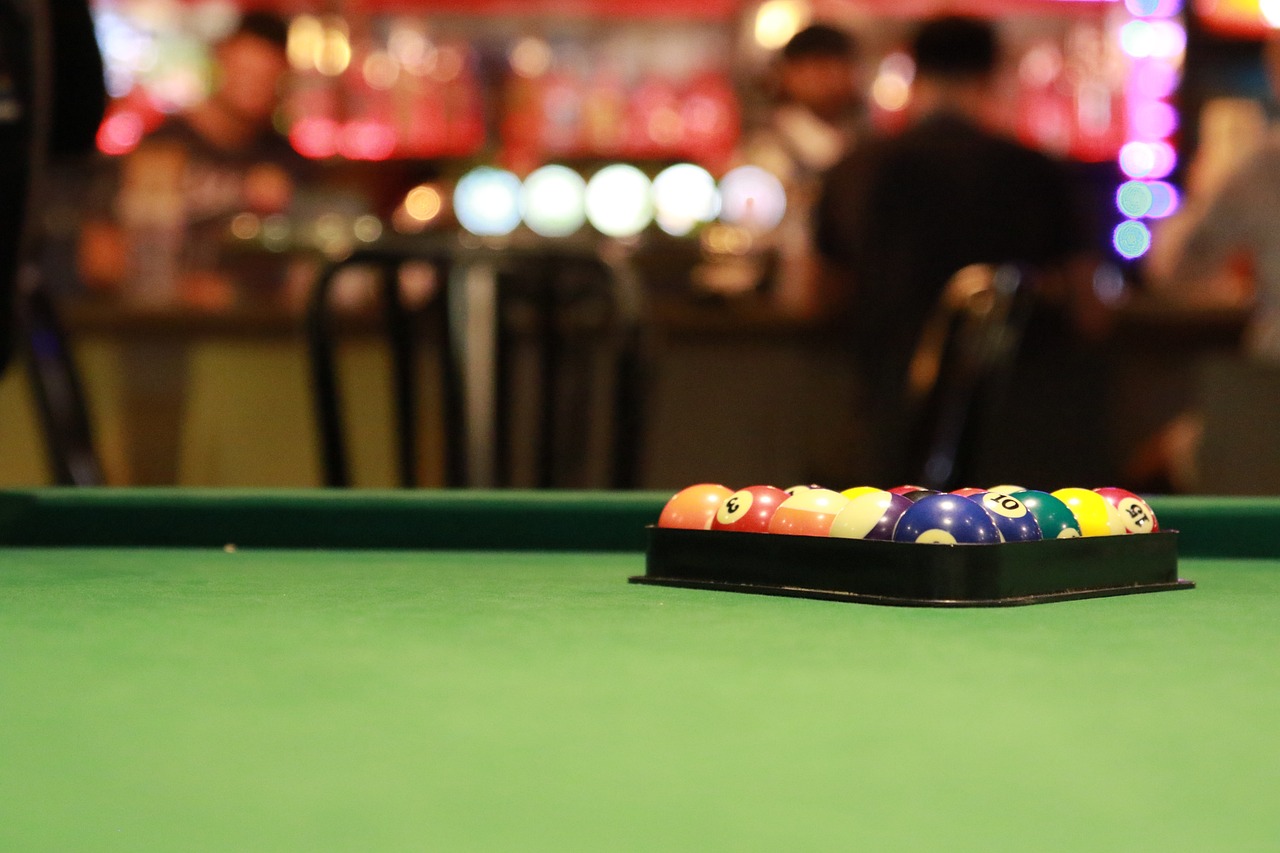The history of pool and pool tables is a fascinating journey through centuries of recreational gaming, evolving from outdoor lawn games to sophisticated indoor pastimes. Below, I outline the origins, development, and cultural significance of pool, followed by a detailed discussion of modern domestic pool tables.
Origins of Pool and Billiards
The roots of pool lie in billiards, a game with origins traceable to 15th-century Europe. Billiards likely evolved from outdoor lawn games resembling croquet, played in Northern Europe, particularly France and England. These games involved hitting balls with sticks through hoops or towards targets on grass. As indoor spaces became more common for leisure among the aristocracy, these games moved inside, transitioning to wooden tables covered with green cloth to mimic grass.
The term “billiards” derives from the French word bille (ball) and billiart (a stick or cue). By the late 15th century, references to indoor billiard games appeared in European literature. For example, a 1470 inventory of King Louis XI of France included a billiard table, one of the earliest recorded instances. Early billiard tables were simple, often lacking standardized dimensions, with wooden surfaces and rudimentary cloth coverings. Balls were made of wood or ivory, and cues were basic sticks, sometimes called maces.

Evolution of Pool and Billiard Games (16th–19th Century)
By the 16th and 17th centuries, billiards gained popularity among European nobility. In England, the game was referenced in Shakespeare’s Antony and Cleopatra (1607), where Cleopatra mentions playing billiards, indicating its cultural presence. Tables during this period featured raised wooden rails to keep balls from falling off, and some had pockets, though these were initially hazards rather than targets.
The 18th century saw refinements in table design. Green baize became standard for table surfaces, improving ball roll. The Industrial Revolution in the 19th century brought significant advancements:
- Table Construction: In 1826, John Thurston, a London cabinetmaker, introduced slate beds for billiard tables, replacing wooden surfaces. Slate provided a smoother, more durable playing surface, revolutionizing table quality.
- Cue Development: By the 1800s, cues evolved from maces to slender sticks with leather tips, improving precision. The term “cue” comes from the French queue (tail), reflecting the stick’s shape.
- Rubber Cushions: In 1835, John Thurston patented vulcanized rubber cushions, replacing stuffed cloth or wooden rails. This allowed for more predictable ball rebounds, enhancing gameplay.
- Standardization: Games like English billiards (a three-ball game combining caroms and pocketing) became standardized, with tables typically measuring 12 feet by 6 feet.
The term “pool” emerged in the 19th century, particularly in America. It referred to collective betting games (from the French poule, meaning a collective stake or “pot”). Pool rooms, where wagering occurred, became associated with pocket billiards games. By the late 1800s, pool diverged from traditional billiards, with games like straight pool and eight-ball gaining traction, especially in the United States.

Pool in the 20th Century
The 20th century saw pool’s transformation into a global recreational and competitive sport:
- Game Variants: Numerous pool games emerged, including eight-ball (popular in the UK and US), nine-ball (dominant in professional circuits), and straight pool. English pool, played with smaller 2-inch balls and a 7-foot table, became a UK staple, distinct from American pool’s larger 2¼-inch balls.
- Cultural Impact: Pool gained a populist image, often associated with pubs, bars, and working-class venues, contrasting with the aristocratic connotations of snooker or carom billiards. Films like The Hustler (1961) and The Color of Money (1986) cemented pool’s gritty, charismatic appeal.
- Table Manufacturing: Companies like Brunswick (US) and Riley (UK) became leading manufacturers, producing high-quality tables for both professional and domestic use. Innovations included improved cloth (e.g., worsted wool for faster play) and levelling systems for slate beds.

Modern Domestic Pool Tables in the UK
In the modern era, pool tables are a popular feature in UK homes, reflecting both recreational trends and advancements in manufacturing. Domestic pool tables cater to a range of budgets, spaces, and preferences, with designs balancing functionality, aesthetics, and affordability. Below is a detailed exploration of their characteristics, costs, and considerations in the UK market as of 2025.
Types of Domestic Pool Tables

- English Pool Tables:
- Size: Typically 6ft x 3ft or 7ft x 4ft, designed for English pool with 2-inch balls.
- Features: These tables often have a pub-style aesthetic, with coin-operated mechanisms on some models (though domestic versions usually have a ball-return system or free-play option). They use a single-piece slate bed (19–25mm thick) for durability and smooth play.
- Cloth: Wool-nylon blends (e.g., Hainsworth Smart Cloth) are common, offering durability and speed. Colours like green, blue, or red are popular.
- Price Range: Entry-level models start at £500–£1,000, with mid-range tables (e.g., Supreme or DPT brands) costing £1,200–£2,500. High-end custom tables can exceed £5,000.
- Popularity: English pool tables are the most common in UK homes due to their compact size and familiarity from pub culture.
- American Pool Tables:
- Size: Typically 8ft x 4ft or 9ft x 4.5ft, designed for 2¼-inch balls, offering a larger playing area.
- Features: These tables have wider pockets (4.5–5 inches vs. 3.5 inches for English tables) and often use faster worsted cloth (e.g., Simonis 860). They may feature bold designs, such as black or mahogany finishes, appealing to modern aesthetics.
- Price Range: Basic models start at £1,500–£2,500, with professional-grade tables (e.g., Diamond or Brunswick) ranging from £3,000 to £8,000 or more.
- Popularity: Less common in UK homes due to space requirements but popular among enthusiasts of American-style games like nine-ball.
- Convertible or Multi-Game Tables:
- Design: These tables combine pool with other games (e.g., table tennis or air hockey) or double as dining tables with a removable top. They are space-saving and family-friendly.
- Materials: Often use MDF (medium-density fibreboard) instead of slate to reduce cost and weight, though this compromises play quality.
- Price Range: £300–£1,500, depending on size and quality. High-end dining-pool tables (e.g., Aramith Fusion) can cost £3,000–£6,000.
- Popularity: Increasingly popular in urban homes with limited space, particularly in flats or multi-purpose rooms.
- Folding or Portable Tables:
- Design: Lightweight, often with MDF surfaces and foldable legs for easy storage. Sizes range from 4ft to 6ft.
- Use Case: Ideal for casual players or families with limited space, such as in small flats or temporary setups.
- Price Range: £150–£500, with budget brands like BCE or Riley dominating this segment.
- Limitations: Inferior play quality due to non-slate surfaces and less stable frames.
Materials and Construction
- Slate Beds: High-quality domestic tables use slate beds (19–25mm for English tables, up to 30mm for American tables) for a flat, consistent playing surface. Slate is heavy (200–400kg for a 7ft table), requiring sturdy frames and professional installation.
- Frames: Hardwoods like oak, mahogany, or walnut are common for premium tables, while MDF or plywood is used in budget models. Modern designs may incorporate metal or composite materials for a contemporary look.
- Cloth: Wool-nylon blends are standard for English pool tables, offering durability and a slightly slower roll. Worsted cloth, used on American tables, is smoother and faster but more expensive (replacement costs £100–£300).
- Cushions: High-grade rubber cushions ensure consistent ball bounce. K66 or K55 profiles are standard for American and English tables, respectively.
- Accessories: Domestic tables often come with cues, balls (2-inch for English, 2¼-inch for American), a triangle, and chalk. Higher-end packages may include lighting or cue racks.
Cost Considerations
- Entry-Level (£150–£1,000): Budget tables, often MDF-based, are affordable but lack the durability and play quality of slate tables. Suitable for casual players or children.
- Mid-Range (£1,000–£3,000): These slate-bed tables offer good quality for regular home use. Brands like Supreme, BCE, or DPT are popular, with options for customization (e.g., cloth colour or cabinet finish).
- High-End (£3,000–£10,000+): Premium tables from manufacturers like Riley, Brunswick, or Peradon feature bespoke designs, superior materials, and professional-grade play. Custom options (e.g., engraved frames or LED lighting) increase costs.
- Additional Costs: Installation (£100–£300), delivery (£50–£200), and accessories (e.g., quality cues at £30–£150 each) add to the total. Reclothing every 3–5 years costs £100–£400, depending on cloth quality.
Space and Installation
- Room Size: A 7ft English pool table requires a room of at least 14ft x 11ft to allow comfortable cueing (assuming a 4ft cue). An 8ft American table needs 15ft x 12ft. Smaller tables (6ft) fit rooms as small as 13ft x 10ft.
- Installation: Slate tables require professional assembly due to their weight and need for precise levelling. Many UK retailers (e.g., Home Leisure Direct or Liberty Games) offer installation services.
- Lighting: Proper overhead lighting (e.g., a triple-shade billiard light, £100–£500) enhances visibility and aesthetics.
Trends in Domestic Pool Tables (2025)
- Smart Tables: Some manufacturers offer tables with digital features, such as score-tracking apps or LED-lit rails, appealing to tech-savvy buyers. Prices start at £2,000.
- Eco-Friendly Materials: Sustainable woods and recycled materials are gaining traction in premium models, reflecting environmental concerns.
- Compact Designs: With urban living on the rise, smaller 6ft tables and convertible designs are increasingly popular in cities like London or Manchester.
- Customization: Buyers can choose bespoke cloth colours, frame finishes, or even branded logos, with companies like Rasson offering fully customized tables for £5,000+.
Cultural Context in the UK
Pool tables in UK homes reflect a blend of pub culture and modern leisure trends. English pool, with its smaller tables and balls, dominates due to familiarity from pubs and clubs. Domestic tables are often placed in dedicated games rooms, garages, or converted dining areas. The rise of online retailers like Home Leisure Direct and Liberty Games has made purchasing easier, with showrooms in cities like Bristol and London allowing buyers to test tables. Social media platforms like X also highlight a growing community of home pool enthusiasts sharing setup ideas and custom designs.
Maintenance and Longevity
- Maintenance: Regular brushing of the cloth, cleaning balls, and checking cushion bounce extend table life. Professional reclothing every few years maintains play quality.
- Durability: Slate-bed tables can last decades with proper care, while MDF tables may warp or degrade within 5–10 years.
- Resale Value: High-quality slate tables retain value, with second-hand models from reputable brands selling for 50–70% of their original price.
Conclusion
The history of pool and pool tables reflects a journey from aristocratic pastime to global recreational sport, driven by innovations in table design and cultural shifts. In the UK, domestic pool tables in 2025 cater to diverse needs, from budget-friendly MDF models to luxurious slate-bed tables costing thousands of pounds. English pool tables dominate due to their compact size and cultural familiarity, while American and convertible tables appeal to niche markets. With prices ranging from £150 to over £10,000, modern domestic tables offer options for casual players, families, and serious enthusiasts, blending functionality with aesthetic appeal in UK homes.

